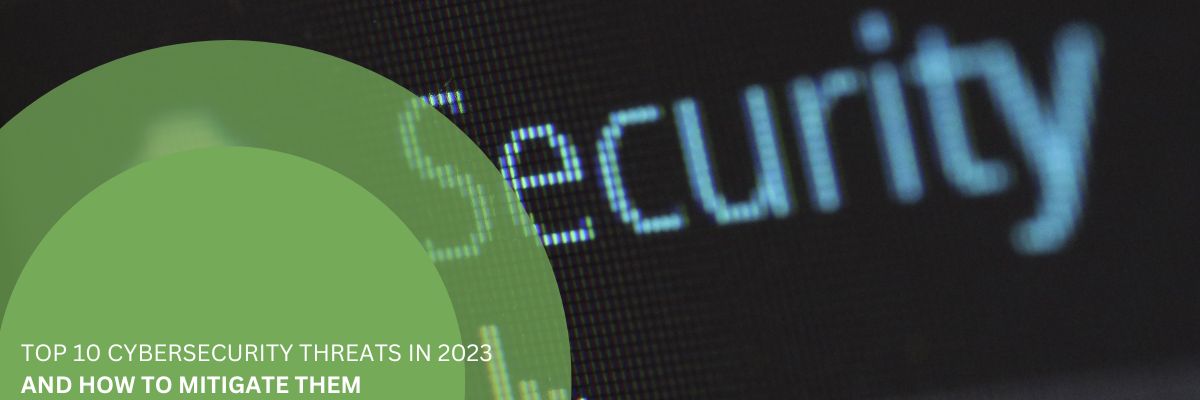As technology advances, so do the threats lurking in cyberspace. In 2023, businesses face a landscape riddled with sophisticated cyber threats that can cause significant damage to their operations, reputation, and sensitive data. To safeguard against these dangers, it is crucial for organisations to be aware of the top cybersecurity threats they might encounter and implement effective mitigation strategies. In this blog post, we’ll explore the most pressing cyber threats of 2023 and provide actionable steps to protect your business.
Ransomware Attacks:
Ransomware continues to be a major threat in 2023, with cybercriminals becoming even more sophisticated in their techniques. To mitigate ransomware risks, regularly back up critical data and store it offline. Additionally, implement robust security measures, conduct employee awareness training, and keep software and systems up-to-date with the latest patches.
Phishing and Social Engineering:
Phishing attacks are evolving to become more deceptive and targeted. Educate your employees about the latest phishing techniques and encourage them to verify suspicious emails or messages before taking any action. Implement two-factor authentication (2FA) to add an extra layer of protection.
Supply Chain Attacks:
Attacks on supply chains have become prevalent, targeting third-party vendors and suppliers. To mitigate this risk, conduct thorough security assessments of all vendors and maintain clear communication to ensure they adhere to robust cybersecurity practices.
Insider Threats:
Insider threats, whether malicious or unintentional, can cause severe damage. Implement access controls, closely monitor user activities, and foster a culture of cybersecurity awareness within your organisation.
Internet of Things (IoT) Vulnerabilities:
With the proliferation of IoT devices, securing them becomes paramount. Change default credentials, segment IoT devices from critical networks, and update firmware regularly to patch known vulnerabilities.
Advanced Persistent Threats (APTs):
APTs remain persistent and stealthy, making detection challenging. Employ advanced threat detection solutions, conduct regular security audits, and collaborate with threat intelligence-sharing communities to stay ahead of APTs.
Zero-Day Exploits:
Zero-day vulnerabilities pose a significant risk as they are unknown to vendors. A zero-day vulnerability is a software vulnerability discovered by attackers before the vendor has become aware of it. Because the vendors are unaware, no patch exists for zero-day vulnerabilities, making attacks likely to succeed. Regularly update security software, deploy intrusion detection systems (IDS), and consider threat hunting to identify potential zero-day exploits.
Cloud Security Risks:
As businesses embrace cloud services, securing cloud environments becomes crucial. Implement strong access controls, encryption, and employ reputable cloud service providers with a proven track record in security.
Data Breaches and Non-Compliance:
Data breaches can lead to costly legal and reputational consequences. Implement data loss prevention (DLP) strategies, comply with relevant data protection regulations, and encrypt sensitive data.
AI-Powered Cyber Attacks:
With AI technology becoming more accessible, cybercriminals are using it to launch sophisticated attacks. Deploy AI-powered security tools to detect and respond to AI-generated threats effectively.
In 2023, the cyber threat landscape demands constant vigilance and proactive measures to safeguard against potential breaches. By staying informed about the latest cybersecurity threats and adopting robust mitigation strategies, businesses can significantly reduce their risk exposure. Regular employee training, advanced security solutions, and a culture of cybersecurity awareness are essential components of a comprehensive cybersecurity defence. Protect your business, your data, and your customers by taking cybersecurity seriously and always staying one step ahead of malicious actors. Yunatech can support your business and cybersecurity please get in contact.

